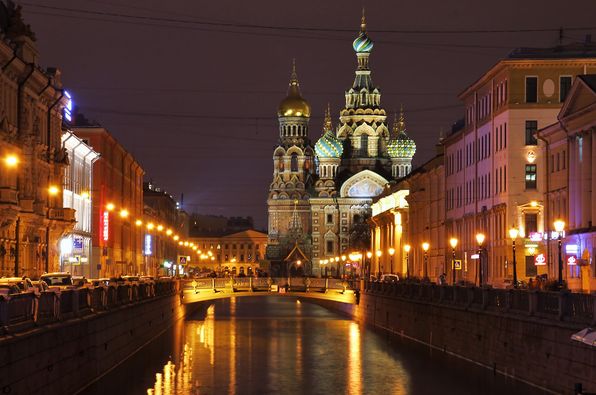
AsianOverland.net
Tour Guide - Itinerary
Asian Overland Sydney to London
Started 22/06/2022 Finished 21/06/2023365 Days ITINERARY
Day 239 date 15/02/2023LENINGRAD to ST PETERSBURG, RUSSIA
ASIANOVERLAND.NET RUSSIA SCANDINAVIA
DAY 15/239 1981 – LENINGRAD TO ST PETERSBURG, RUSSIA
Fortress
Hermitage
On 12 May [O.S. 1 May] 1703, during the Great Northern War, Peter the Great captured Nyenskans and soon replaced the fortress.[24] On 27 May [O.S. 16 May] 1703,[25] closer to the estuary (5 km (3 mi) inland from the gulf), on Zayachy (Hare) Island, he laid down the Peter and Paul Fortress, which became the first brick and stone building of the new city.[26]
The city was built by conscripted peasants from all over Russia; a number of Swedish prisoners of war were also involved in some years under the supervision of Alexander Menshikov.[27] Tens of thousands of serfs died building the city.[28] Later, the city became the centre of the Saint Petersburg Governorate. Peter moved the capital from Moscow to Saint Petersburg in 1712, 9 years before the Treaty of Nystad of 1721 ended the war; he referred to Saint Petersburg as the capital (or seat of government) as early as 1704.[23]
Map of Saint Petersburg, 1744
During its first few years, the city developed around Trinity Square on the right bank of the Neva, near the Peter and Paul Fortress. However, Saint Petersburg soon started to be built out according to a plan. By 1716 the Swiss Italian Domenico Trezzini had elaborated a project whereby the city centre would be on Vasilyevsky Island and shaped by a rectangular grid of canals. The project was not completed but is evident in the layout of the streets. In 1716, Peter the Great appointed Frenchman Jean-Baptiste Alexandre Le Blond as the chief architect of Saint Petersburg.[29]
The style of Petrine Baroque, developed by Trezzini and other architects and exemplified by such buildings as the Menshikov Palace, Kunstkamera, Peter and Paul Cathedral, Twelve Collegia, became prominent in the city architecture of the early 18th century. In 1724 the Academy of Sciences, University and Academic Gymnasium were established in Saint Petersburg by Peter the Great.
In 1725, Peter died at age fifty-two. His endeavours to modernize Russia had met with opposition from the Russian nobility—resulting in several attempts on his life and a treason case involving his son.[30] In 1728, Peter II of Russia moved his seat back to Moscow. But four years later, in 1732, under Empress Anna of Russia, Saint Petersburg was again designated as the capital of the Russian Empire. It remained the seat of the Romanov dynasty and the Imperial Court of the Russian Tsars, as well as the seat of the Russian government, for another 186 years until the communist revolution of 1917.
© This work is copyright. Apart from any use permitted under the Copyright Act 1968, no part may be reproduced by any process, nor may any other exclusive right be exercised, without the permission of Peter Searle, peter@portseavillageresort.com; 1980-2024.
Website built by Justin O’Dea www.webdeveloperdocklands.com.au







